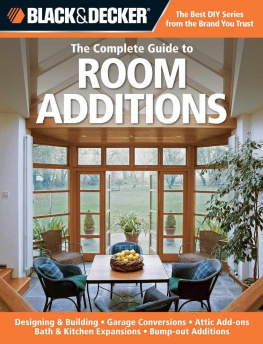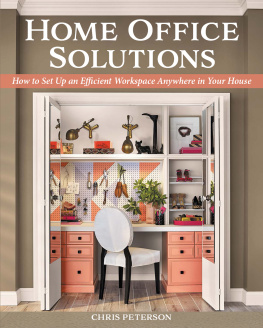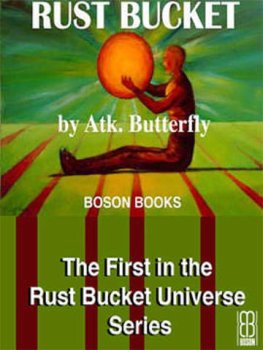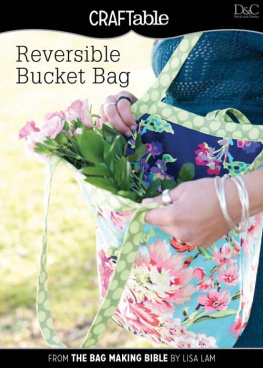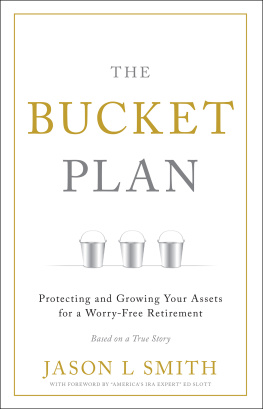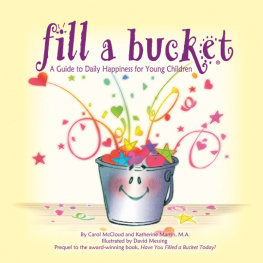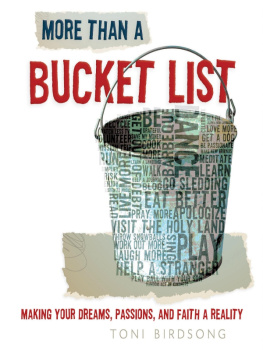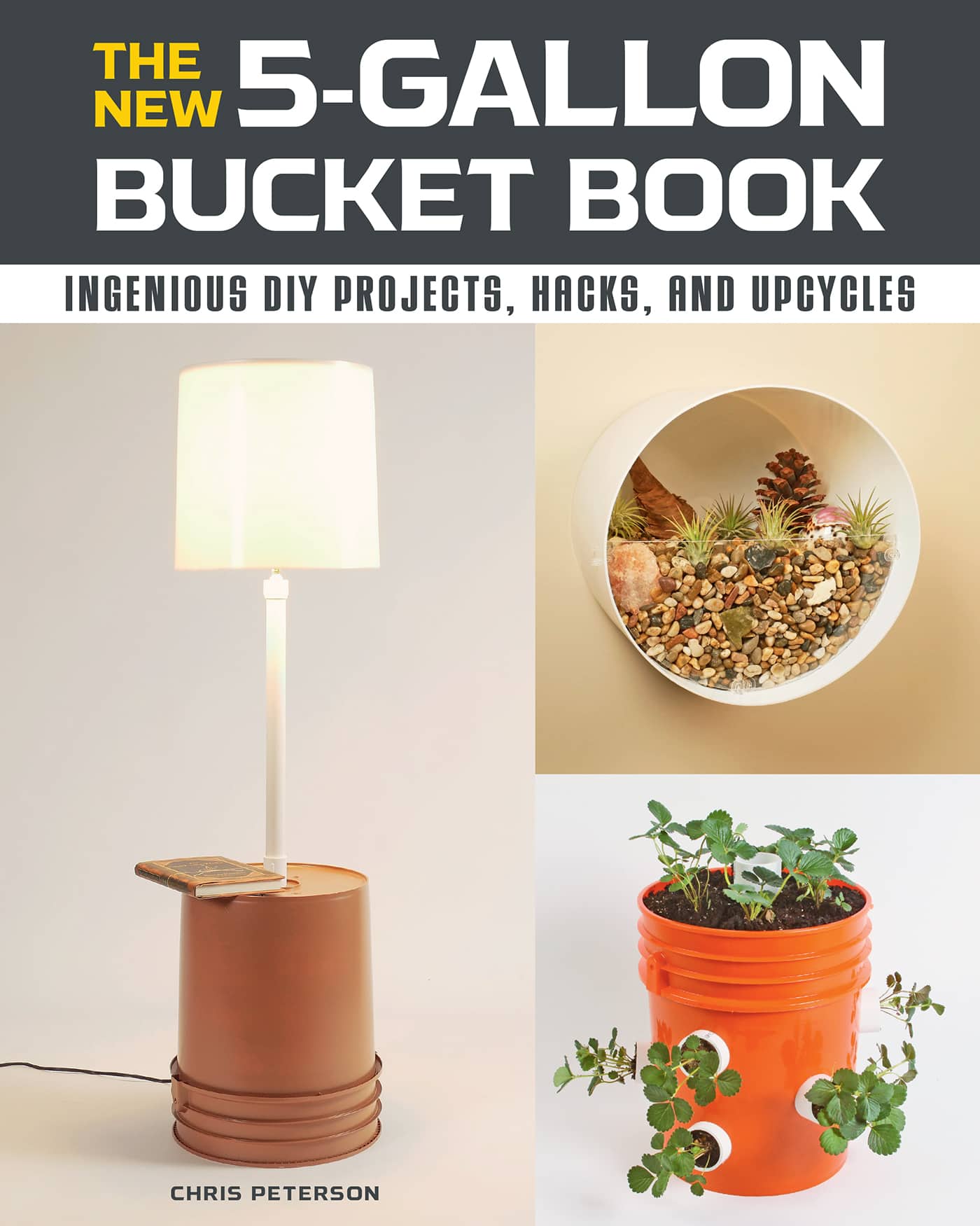Contents
Page List
Guide
Cover
THE NEW 5-GALLON
BUCKET BOOK
INGENIOUS DIY PROJECTS, HACKS, AND UPCYCLES
CHRIS PETERSON

CONTENTS
INTRODUCTION
IT HAS BEEN SAID THAT THE BEST THINGS IN LIFE ARE FREE. SO TRUE. FOR THE HOMEOWNER, THE HOMESTEADER, THE DIYER, AND THE CRAFTING CURIOUS, FREE IS ALWAYS THE PREFERRED PRICE. WHY PAY FOR SOMETHING WHEN YOU DONT HAVE TO? UNFORTUNATELY HOME CENTERS AND HARDWARE STORES ARE STILL CHARGING VERY REAL PRICES FOR THE GOODS IN THEIR AISLES.
Take heart, though; there is an abundant do-it-yourself material that you can tap without ever taking out your wallet. That resource is the ubiquitous 5-gallon (18.9 L) bucket.
This humble container may not look like much, but it is amazingly adaptable and useful. Believe it or not, that rigid, round plastic form holds a potential air conditioner () that can aid your future major leaguer in perfecting his or her split-finger fastball. It would be easier to list what you couldnt make with a 5-gallon bucket.
This new edition of the 5-Gallon Bucket Book expands on the many projects of the first edition. You will still find incredibly useful standards like a Portable Wine Rack () to take advantage or your precious little outdoor space. For this edition weve added more projects, more creativity, more useful tips, and more fun.
Thats not to say you have to stick with the project designs in this book. They can just as easily be jumping-off points, inspiration for your own inner genius. Theres no law that says you cant put your individual stamp on the 5-gallon bucket canon and create something truly unique. In fact thats a big part of this new edition: fun is a factor. Crafting 5-gallon bucket projects is just plain a blast. You dont risk a lot, because you wont be losing much if things dont come together the way you planned. And crafting something like an Acoustic Speaker Dock () can be as amusing as it is rewarding and useful.
Whether youre working off of one of the designs here, or going your own way with your own design, the tools and techniques youll use are as basic as basic can get. A measuring tape, drill, jigsaw, and a little elbow grease are about all youll need to get started. This edition expands on some of those basics, offering additional techniques within the new projects. But you probably know what you need to knowand own the tools you have to havealready.
Although this may not be a skill-building resource, the projects in the pages that follow could conceivably save you hundreds of dollars over the cost of store-bought versions. Thats the real reward. Oh, and the pure satisfaction of making your own handy Garden Cart () to delight and fascinate visitors to your home while amusing yourself.
Youll also be helping the environment because, for all their wonderful uses, 5-gallon buckets do not biodegrade. Far too many of them are cluttering landfills around the country. Thats an especially egregious waste considering all the amazing creations they could become.
CHOOSING YOUR BUCKET
You wont have to look very long or hard to discover that not all 5-gallon buckets are alike. The vast majoritybut certainly not all of themare made of high-density polyethylene (HDPE). This plastic holds up well under high temperatures and releases low levels of contaminants. Low-density polyethylene containers are flimsier and will not tolerate higher temperatures or high-temperature contents. All the projects in this book should be executed using HDPE buckets.
Many of these projects, and probably many that you can create out of your own imagination, involve consumables of one form or another. The plastic in a bucket that will carry food or drink must be food grade. Non-food-grade plastic buckets may contain harmful compounds that can leach out of the plastic and into whatevers kept in the bucketespecially if any foodstuff you introduce is acidic. This is very important to keep in mind for projects such as the Water Filter ().
If youre unsure of what the bucket contained before you got ahold of it, the bucket itself can probably tell you a lot about the original contents. Obviously, a label listing food contents such as beans, frosting, or salad dressing indicates food-safe plastic. Symbols on the label also offer clues. A snowflake means that the bucket (and its original contents) can be refrigerated or frozen. A wave symbol or dishes in water mean microwave safe and dishwasher safe, respectivelyall signs that the bucket contained food. The manufacturer listed on any label may be a giveaway as well. Do a web search for the manufacturers name or any code on the bucket and youll likely turn up what that manufacturer produces and puts into its buckets.
Lastly you can look on the bottom in the recycling triangle that is stamped on most buckets. A 1, 2, 4, or 5 inside that triangle tells you that the plastic out of which the bucket has been manufactured is safe for food. In most cases, a 7 and the term bioplastic means the bucket is food safe as well.
THE BUCKET BARGAIN
The best price for anything is free. Finding free five-gallon buckets is easy when you consider the many ways this exceptional resource is used. The trick is to hit up businesses that receive raw materials in the buckets but then have no reason to keep them.
RESTAURANTS, BAKERIES, AND OTHER FOOD RETAILERS. Any buckets you recover from these institutions are going to be food grade and are ideal for use in consumable projects. Of course, these buckets are also great for other projects. Make sure you clean the buckets thoroughly though.
BUILDING CONTRACTORS. Large renovation and building contractors often tear through five-gallon buckets of wall compound and regularly toss them right into an on-site dumpster. Youll need to thoroughly clean these buckets before use, but they are some of the tougher buckets youll find. However, do not go onto a construction or private job site without permission. If the dumpster is on public property waiting to be emptied, its fair game. That said, its always nice to ask before taking.
SUPERMARKETS. Grocery stores order many different materials that are delivered in five-gallon buckets. Check the information under Choosing Your Bucket on to determine if buckets scavenged from a supermarket are food safe. Youll usually find the free buckets stacked near a dumpster. Some supermarkets recycle their plastic buckets, so, as always, its a good idea to seek out the store manager and ask if the buckets are there for the taking.
SCHOOLS. Public school cafeterias and janitorial departments order both edibles and cleaning products in five-gallon buckets. Look for identifying labels and never assume a bucket rescued from a school dumpster is food safe.


